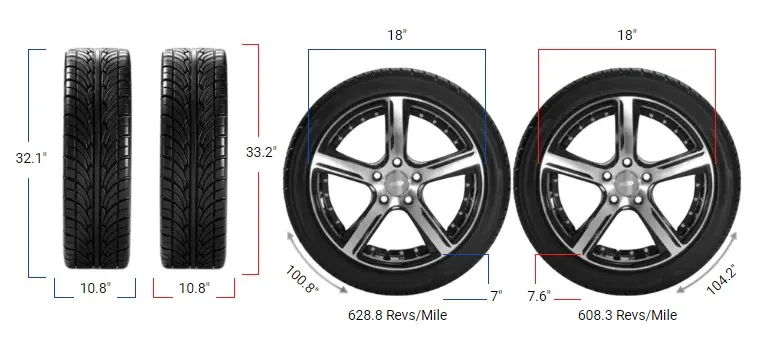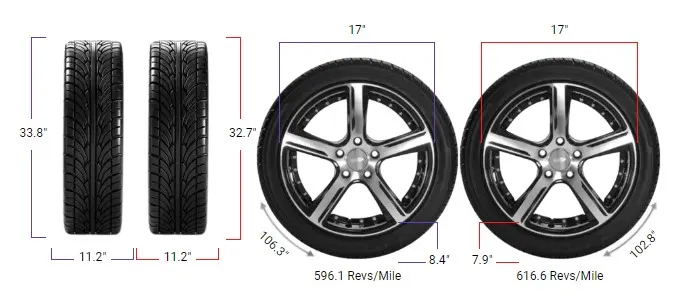Tire Size 235/65r17 vs 245/65r17
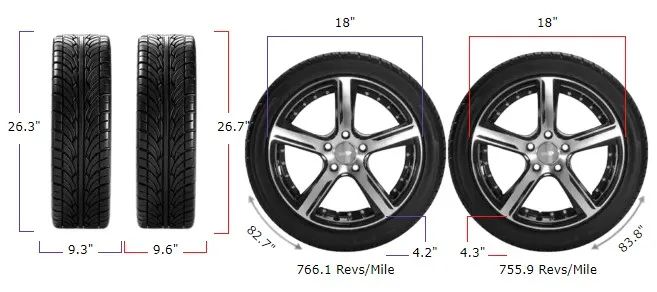
Switching from 235/65R17 tires to 245/65R17 is a common upgrade for those looking for a bit more tire width and a slight increase in diameter. But how does this impact your vehicle’s performance on and off the road?
- Wider tires provide improved traction on both wet and dry surfaces
- Increased stability enhances handling during cornering
- Improved off-road performance due to a larger contact patch
- Slightly reduced fuel efficiency may occur due to increased rolling resistance
- Aesthetic appeal is enhanced with a broader tire profile
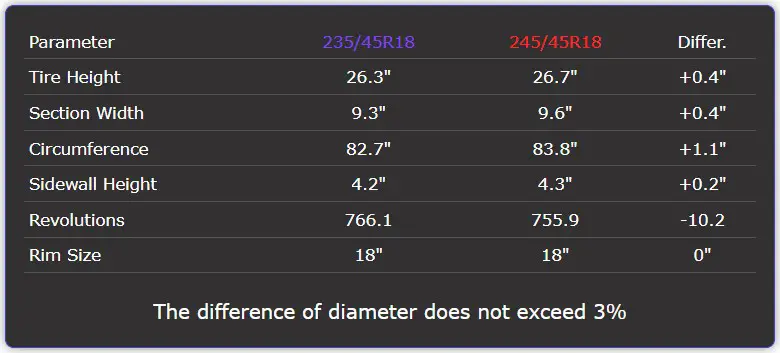
Fitment Guide
The diameter difference between the 235/65R17 (29.03 inches) and 245/65R17 (29.54 inches) is just 0.51 inches (1.8%), which is acceptable.
Adapting your vehicle for a larger tire may be necessary to avoid issues like rubbing or clearance problems.
On-Road Impact
Switching to a 245/65R17 can enhance your vehicle’s on-road performance. With a wider tire, you may experience improved traction and stability, especially during cornering.

However, the slightly increased width can lead to a minor reduction in fuel efficiency due to added rolling resistance.
- Ground Clearance: The larger tire increases ground clearance by about 0.51 inches, which can help with obstacle navigation on urban roads.
- Ride Comfort: The wider tire may provide a softer ride due to its larger surface area absorbing bumps more effectively.
- Speedometer Accuracy: The change in revolutions per mile (694.79 vs. 682.75) means your speedometer may read slightly faster than your actual speed. For example, at 20 mph, your speedometer may show 20.35 mph.
Off-Road Impact
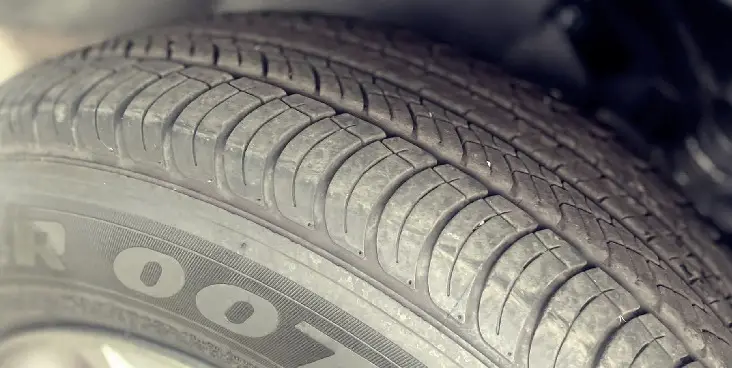
For off-road enthusiasts, the transition to a 245/65R17 tire brings several benefits, but there are also drawbacks to consider.
- Traction: The increased width and slight height can enhance traction on loose surfaces, such as mud or gravel.
- Durability & Wear: A wider tire can distribute weight more evenly, potentially reducing wear and improving durability.
- Aesthetics Look: The 245/65R17 tire gives a more aggressive look, appealing to those who enjoy an enhanced off-road aesthetic.
However, a wider tire can also lead to a higher likelihood of getting stuck in deep ruts or mud due to increased surface area making it harder for the tire to dig in.
Below is a detailed comparison between the tire sizes 235/65R17 and 245/65R17, highlighting their key differences.
| Feature | 235/65R17 | 245/65R17 | Difference |
|---|---|---|---|
| Diameter inches (mm) | 29.03 (737.3) | 29.54 (750.3) | 0.51 (13) +1.8% |
| Width inches (mm) | 9.25 (235) | 9.65 (245) | 0.39 (10) +4.3% |
| Circumference inches (mm) | 91.19 (2316.3) | 92.80 (2357.14) | 1.61 (40.84) +1.8% |
| Sidewall Height inches (mm) | 6.01 (152.75) | 6.27 (159.25) | 0.26 (6.5) +4.3% |
| Revolutions per mile (km) | 694.79 (431.72) | 682.75 (424.24) | -12.04 (-7.48) -1.7% |
| Speedo Reading | 20 mph | 20.35 mph | +0.35 mph |
Difference Between 235/65r17 and 245/65r17
The main difference between 235/65R17 and 245/65R17 tires is their width and overall diameter. The 245 tire is slightly wider and taller, offering improved traction and stability.
Can I Use 245/65r17 Instead of 235/65r17?
Yes, you can use 245/65R17 instead of 235/65R17, as the difference in diameter is within the acceptable range. However, ensure there are no clearance issues with your vehicle.
How Much Taller Is a 245/65r17 Tire Than a 235/65r17?
A 245/65R17 tire is approximately 0.51 inches taller than a 235/65R17 tire, which is a minor difference that typically won’t affect performance significantly.
How Much Wider is a 245/65r17 Tire Than a 235/65r17?
A 245/65R17 tire is about 0.39 inches wider than a 235/65R17 tire, which provides more surface contact, potentially improving grip and stability.
Our Observation
Switching from 235/65R17 to 245/65R17 has both benefits and shortcomings. The increase in tire size offers improved traction and stability on the road, resulting in a more comfortable driving experience.
The extra ground clearance is advantageous for off-road activities, allowing you to tackle obstacles with ease.
However, the minor difference in width can affect fuel efficiency slightly, as the wider tire creates more rolling resistance.
While the changes are generally negligible for everyday driving, those who prioritize off-road performance may appreciate the enhancements. It’s essential to consider your driving habits and preferences to determine if the switch aligns with your needs.


